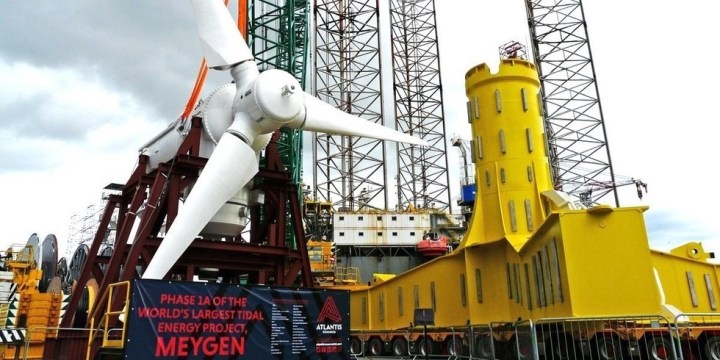
The turbine itself weighs in at over 200 tons, and is nearly 50 feet tall with blades equally as large. One turbine can produce up to 1.5 megawatts of power, and when the project is completed, 269 of these behemoths will harness the power of the waves to produce nearly 400 megawatts of power.
Officials say the tidal energy farm won’t reach full capacity until the early 2020s, and much more investment is needed. To give an idea of the high cost of the project, just the first four turbines alone cost a staggering $30 million to build. That would suggest that the total cost will be over $2 billion, not taking into account future inflation.
Scottish officials and clean energy lobbyists are hailing the launch as a significant moment in the renewable energy sector. They also hope the milestone will spur the U.K. Government to clear up questions surrounding its subsidy program for clean energy projects.
The U.K. Government slashed available subsidies twice, once last December when it claimed that money was being “over-allocated” to clean energy projects, and again unexpectedly in August following the country’s “Brexit” vote. Until government officials provide more clarity on their commitment to clean energy, there still are questions as to whether the Scottish tidal energy project will reach its full potential.
The country could be missing out if it doesn’t follow through, as Scotland lies in a perfect spot for both wind and tidal power. The frequent gales that pass through the British Isles — especially in the winter months — create a good deal of wind and wave action, essential if you’re trying to use it for power generation. Some clean energy experts say Scotland has as much as a quarter of the EU’s potential wind and tidal energy.
Editors' Recommendations
- ‘World’s largest sundial’ to double as green energy provider
- Initiatives for 24/7 clean energy announced at Google I/O 2021
- Clean-energy startup backed by Bill Gates hopes to replace fossil fuels


